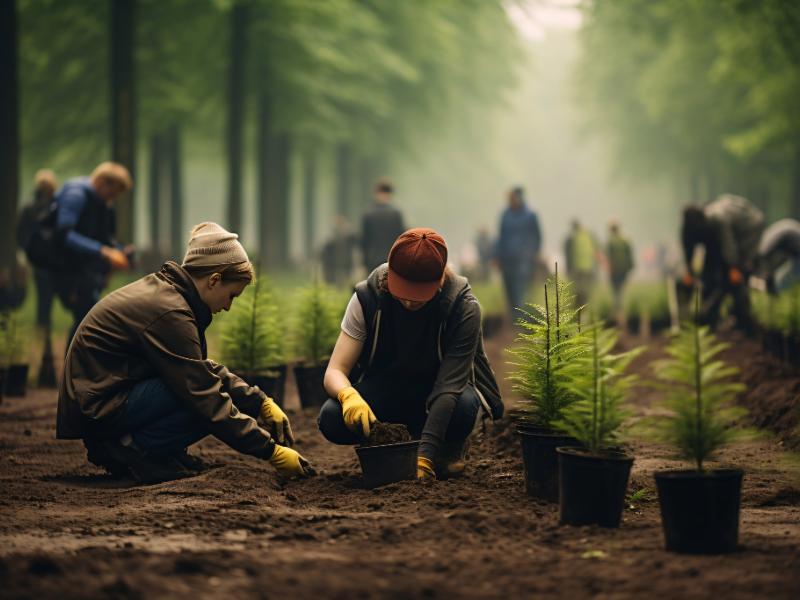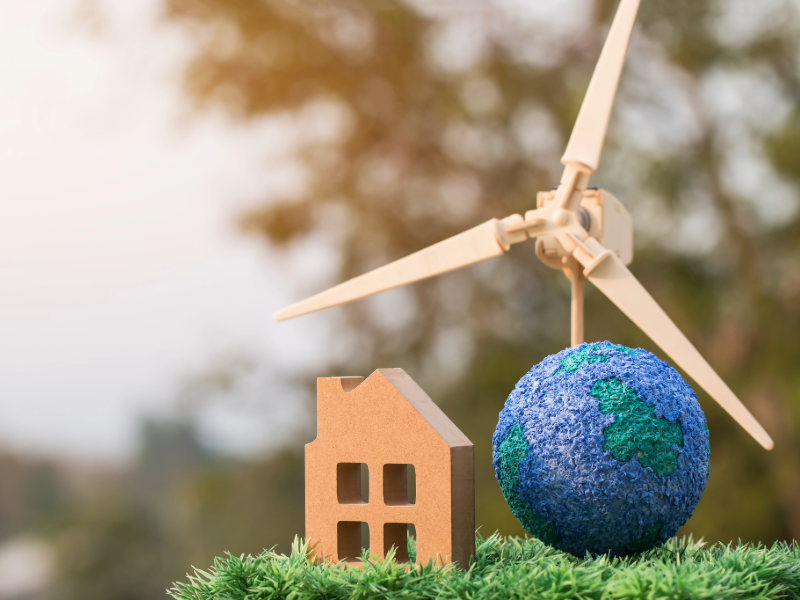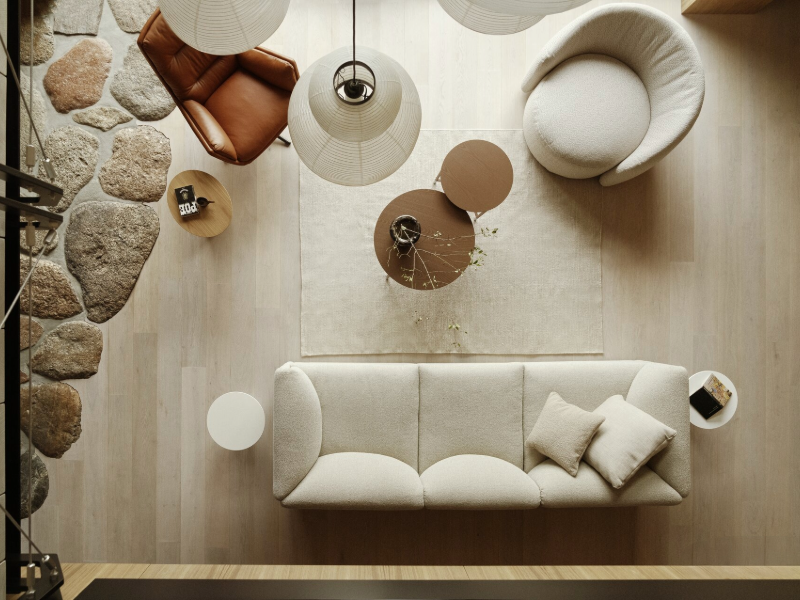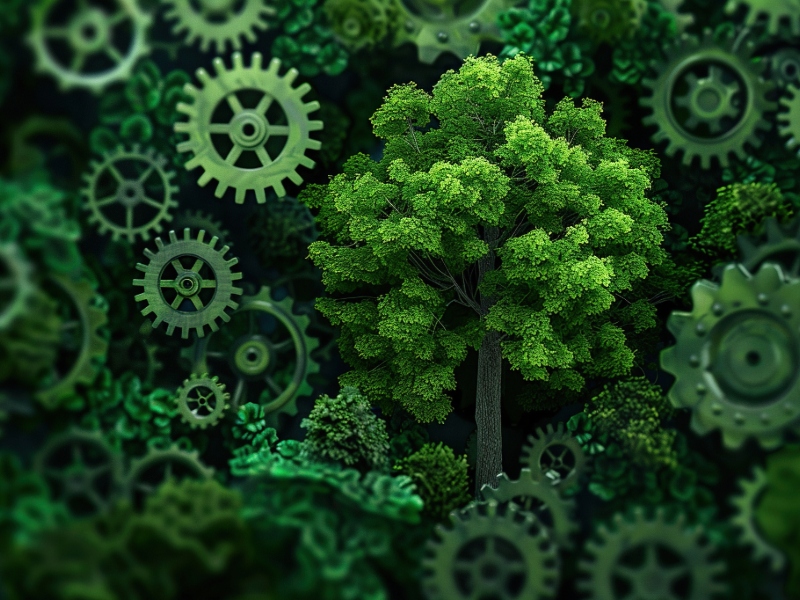Today, “sustainable” and “regenerative” often blend together in conversations about eco-friendly products. While they share common goals, they represent very different approaches to protecting—and restoring—our planet. Understanding this distinction empowers you to make flooring choices that deliver real, lasting environmental benefits, not just marketing promises.
Sustainable manufacturing focuses on minimizing harm. It seeks to slow the depletion of natural resources, reduce energy consumption, and lower carbon emissions throughout the manufacturing process. These efforts matter, but they often stop at reducing damage rather than actively healing ecosystems.
Regenerative manufacturing, on the other hand, takes a bold step further. It aims to reduce environmental impact and create positive outcomes—revitalizing forests, enhancing biodiversity, and rebuilding natural systems for future generations.
At VANTIA, responsibility and craftsmanship go hand in hand. We partner with industry leaders who champion low-waste practices, high-quality materials, and intentional sourcing. Our curated flooring collections are designed to honor natural beauty while supporting a healthier, more regenerative planet. Eco-friendly design builds a better future, one floor at a time.
What Is Sustainable Manufacturing in Flooring?
When it comes to flooring, sustainable manufacturing focuses on producing beautiful, durable products while reducing the strain on the planet’s resources. Instead of depleting ecosystems, it seeks to protect them, working toward lower carbon emissions, less waste, and smarter use of natural resources.
Definition & Goals
Sustainable manufacturing aims to minimize harm at every stage of the manufacturing process. It targets:
- Reducing energy consumption in factories and mills.
- Lowering the carbon footprint associated with production and transportation.
- Preserving raw materials through thoughtful sourcing and efficiency.
Ultimately, sustainable practices create products that tread more lightly on the earth without sacrificing quality or beauty.
Common Sustainable Manufacturing Practices
Leading brands achieve sustainability by weaving smart, measurable steps into their production process:
- Using sustainable materials like FSC-certified wood and natural oil finishes that avoid harmful chemicals.
- Reducing reliance on fossil fuels by integrating renewable energy sources, from solar panels to hydroelectric power.
- Streamlining operations to boost operational efficiency, capture by-products, and limit material offcuts.
These methods create flooring that supports a sustainable future without compromising on aesthetics, strength, or performance.
Challenges & Limitations
While sustainable manufacturing makes a meaningful difference, it often focuses on slowing damage rather than reversing it. Many flooring companies still operate within an extractive model, reducing their environmental impact but not actively healing the ecosystems they rely on. Some brands also fall short of full transparency, making it harder for consumers to separate true progress from clever marketing.
Today, many consumers want to know how to move beyond simply doing less harm and start giving back to the environment.
What Makes Manufacturing Regenerative?

Regenerative manufacturing raises the bar beyond traditional sustainability. Rather than reduce environmental harm, it commits to restoring ecosystems, rebuilding natural resources, and leaving a positive, lasting imprint on the planet.
Core Philosophy
At its core, regenerative manufacturing flips the script. It doesn’t settle for slowing the loss of biodiversity or shrinking a company’s carbon footprint—it actively improves the landscapes and communities it touches. This approach emphasizes:
- Circular use of raw materials, where resources are reused, repurposed, or naturally renewed.
- Restoration of forests, soils, and water systems, rather than extraction without return.
- Local, ethical sourcing that strengthens regional ecosystems and economies.
The goal: thriving forests, cleaner air, and healthier futures built into every plank and panel.
Examples in the Flooring Industry
Regenerative thinking drives the innovation behind some of VANTIA’s most trusted manufacturing partners.
Scheucher, a century-old Austrian mill, leads the way with eco-friendly manufacturing powered by one of Austria’s largest rooftop solar panel systems. Their investment avoids up to four million kilograms of CO₂ emissions every year. Scheucher pairs this renewable energy commitment with responsibly harvested European timber and strict certifications like FSC, EPD, and the EU Ecolabel, ensuring transparency, lower greenhouse gas emissions, and real forest stewardship.
(Did you know? Real wood flooring, like Scheucher’s, can improve indoor air quality by regulating humidity and absorbing pollutants naturally.)
mafi, another VANTIA partner, crafts floors with an uncompromising regenerative philosophy. Their operations stay within a 7.5-mile radius in Austria, cutting down transportation energy consumption and preserving local forest ecosystems. mafi’s natural finishes, like breathable linseed oils, eliminate toxic additives, creating floors that nurture both the earth and the homes they fill.
These manufacturers weave advanced technologies into every layer of their products, pushing for better operational efficiency, minimizing waste, and cutting down carbon emissions across the entire product lifecycle.
Why It Matters
The stakes go far beyond marketing labels. Regenerative manufacturing plays a critical role in:
- Fighting climate change by storing carbon naturally through healthy forests.
- Reversing biodiversity loss through careful stewardship of local ecosystems.
- Building a truly sustainable future where manufacturing and nature thrive together, not at odds.
For homeowners, designers, and builders who care about impact, choosing regenerative flooring makes a value statement in every room.
Comparing Sustainable vs. Regenerative Manufacturing

Choosing between sustainable and regenerative flooring options comes down to understanding the real impact behind the label. While both approaches aim to protect the planet, their goals, methods, and results tell two very different stories.
Impact on the Environment
Sustainability focuses on doing less harm. It reduces waste, minimizes carbon emissions, and slows the depletion of natural resources.
Regeneration, however, moves beyond harm reduction. It creates net-positive outcomes—restoring forests, enriching soils, cleaning water, and building resilient ecosystems.
When you choose regenerative flooring, you invest in a product that not only preserves the environment but actively improves it.
To see regeneration in action, watch how mafi redefines eco-friendly flooring through the Living Product Challenge—setting a bold new standard for natural, restorative design:
The Role of Product Design and Lifecycle Thinking
Sustainable product design emphasizes durability, recyclability, and efficient use of materials.
Regenerative product design goes further. It encourages:
- Disassembly and reuse.
- Circular supply chains where products feed back into future manufacturing.
- Minimal-waste, restorative life cycles that actively reduce greenhouse gas emissions at every stage.
In flooring, that means choosing planks crafted to last, evolve, and ultimately return value to the environment.
Effect on the Consumer & Space
Regenerative floors do more than enhance a home’s beauty. They accomplish the following:
- Support healthier indoor air quality through natural finishes and breathable materials.
- Last longer, reducing the need for frequent replacements and conserving resources.
- Carry a deeper story—one rooted in environmental restoration, craftsmanship, and care.
By choosing regenerative flooring, you help write a different story—one that brings restoration into your home and pushes the entire manufacturing industry forward.
How to Choose the Right Eco-Friendly Flooring with VANTIA

Finding truly eco-friendly flooring goes beyond scanning for green logos or buzzwords. It takes a closer look at how a product is sourced, crafted, and finished—and whether it supports the environment at every stage of its life.
When shopping for earth-friendly hardwood flooring, prioritize materials and manufacturers that deliver real transparency and impact:
- Certifications like FSC, LEED, GREENGUARD Gold, and EPDs that validate responsible forestry, indoor air quality, and low carbon emissions.
- Sourcing details that clearly state where the wood comes from, how it’s harvested, and how the manufacturer protects or regenerates the forests involved.
- Manufacturing processes that focus on reducing waste, conserving energy consumption, and minimizing greenhouse gas emissions across the product lifecycle.
If a brand can’t show these credentials—or if their claims sound vague—consider it a red flag.
Brands That Lead the Way
VANTIA partners exclusively with mills that push the flooring industry forward with real innovation and responsibility:
- mafi: Pioneers of regenerative, hyper-local wood production with carbon-negative flooring practices.
- Scheucher: Masters of Austrian craftsmanship fueled by solar-powered operations and certified eco-friendly wood sourcing.
- Tierra: Purpose-led flooring designed for longevity, minimal environmental impact, and a cleaner indoor ecosystem.
- Bjelin: Technological innovators using Woodura® technology to maximize raw material use while reducing environmental impact.
Each partner focuses on low-impact supply chains, high operational efficiency, and intentional product design that supports both the home and the planet.
Choose Eco-Friendly Flooring with VANTIA
Choosing eco-friendly flooring involves making a deliberate investment in the world you want to live in—and leave behind.
At VANTIA, every floor we offer carries a legacy of care: for craftsmanship, for community, and for the earth itself.
Explore our collection of regenerative and sustainably made hardwood floors designed for a better home and a healthier planet.
